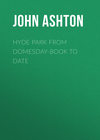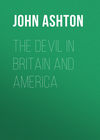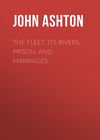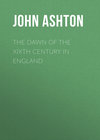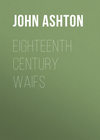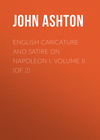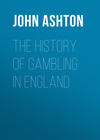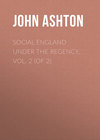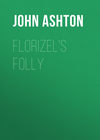Kitobni o'qish: «Hyde Park from Domesday-book to Date»
PREFACE
The only History of Hyde Park, at all worthy of the name, is Vol. I. of “The Story of the London Parks,” by Jacob Larwood. But, its author says, definitely, “What happened in Hyde Park subsequently to 1825, approaches too near to contemporary history to be told in these pages.” This (for Hyde Park has a history since then), added to the inaccuracies and imperfections of the book, has induced me to write a History of Hyde Park from Domesday Book to Date.
JOHN ASHTON.
CHAPTER I
The forests round London – The manor of Eia in Domesday Book – Its subdivision – The Manor of Hyde – The Manor of Ebury – The Manor of Neate – The Neat houses – Henry VIII. and Hyde Park – Queen Elizabeth and Hyde Park – James I. – The deer in the park – Last shooting therein – Foxes – The badger.
In old times London was surrounded by forests, of which the only traces now remaining are at Bishop’s Wood, between Hampstead and Highgate, and the Chase at Enfield. FitzStephen, who lived in the reign of Henry II., tells us, in his Description of London, that beyond the fields to the north of London was an immense forest, beautified with woods and groves – or in other words, park land – full of the lairs and coverts of beasts and game, stags, bucks, boars and wild bulls. Contrary to what one might expect, these forests were not reserved for the sole hunting of the King and his favourites; but, as we are informed by the same writer, many of the citizens took great delight in fowling, with merlins, hawks, etc. (which showed how wealthy they were at that time), and they had the right and privilege of hunting in Middlesex, Hertfordshire, in all the Chiltern country, and in Kent, as far as the River Cray. And this forest of Middlesex was only disforested in 1218 (2 Henry III.).
If, however, Hyde Park was, primævally, a forest, it must have been cleared and brought into cultivation in the Saxon times, for there is no mention of a forest, or even woodland, in the Domesday Book account of the Manor of Eia – in which Hyde Park was situate: on the contrary, it seems as if it was highly cultivated, as is evidenced by the following translation of that portion of the book relating to this manor: —
“Ossulton Hundred. The land of Geoffrey Mannevile.1 Geoffrey de Mannevile holds the Manor of Eia. It was assessed for 10 hides2/. The land is 8 carucates/3. In demesne 5 hides, and there are 2 ploughs/4. The villans5 have 5 ploughs, and a 6th might be made. There is 1 villan with half a hide/ and 4 villans each with 1 virgate,6 and other 14 each with half a virgate/ and 4 bordars7 with one virgate, and 1 cottager. Meadow for 8 ploughs’ teams, and of hay/ 60s. of pasture 7s. In all the profits it is worth £8/ when received £6. In the time of King Edward £12/. Harold, son of Earl Radulf, held this manor, whom Queen/ Editha had the custody of with this manor, on the day that King Edward was alive and dead./ Afterwards, William, the Chamberlain, held it of the Queen in fee for £3,/ yearly to farm. And after the death of the Queen, he now holds it/ of the King, in the same manner. It is now 4 years since William lost the manor, and nothing has been received from the King’s farm, that is £12.”
This Manor of Eia was bounded on the north by the Via Trinobantina, a road which crossed England from the coast of Suffolk to that of Hampshire, and we now call that portion by Hyde Park the Uxbridge Road: and on the east ran the Watling Street, a road from Chester to Dover (of which the Edgware Road is a portion), which crossed the Via Trinobantina, and continued down Park Lane to the Thames – which was the southern boundary of the manor.
About the compilation of Domesday Book the Manor of Eia (we know not why) was divided into three manors, named severally Hyde, Ebury (or Eubery), and Neate (or Neyt), and was given by Geoffrey de Manneville to the Monastery of St. Peter in Westminster, where his wife Athelais was interred, and it was in the possession of this monastery till 1536. The Manor of Neate was nearest the river, about Chelsea, and there it was that the abbots of Westminster had a pleasure house. We read8 how Nicholas Littlington, who was prior of the Monastery, was made Abbot on the elevation of Abbot Simon Langham to the See of Ely in 1362, and how “he improved the estate of the convent at Hyde” – and also how he died, November 29th, 1386, “at the Manor house of Neyte near Westminster, at that time thought a good building; for the Duke of Lancaster,9 styling himself King of Castile, desired leave of the Abbot to reside there during a sitting of parliament at Westminster.” And here also was born John, the fifth son of Richard, Duke of York, on November 7th, 1448. Here died (May 12th, 1532) John Islip, who was elected Abbot of Westminster October 27th, 1500, and was buried in a chapel in the Abbey, which he built and which is still called by his name. In his abbacy (1502-3) the building of Henry VII.’s Chapel was begun, and in 1532 he negotiated an exchange between the Abbey and the King; the latter had from the Abbey about one hundred acres of land, part of which was made into St. James’s Park, and the former received in exchange the priory of Poughley, in Berks, of which Cardinal Wolsey had procured the dissolution, to help him endow the colleges he designed at Oxford and Ipswich.
Islip’s successor was William Boston, and, in 1536, an Act of Parliament was passed (28 Henry VIII., c. 49) and confirmed by a conveyance dated July 1, 1537, granting the King the lands belonging to the Abbey of “Nete, within the towne and paryshes of Westmynster and Seynt Martyn’s in the Felde,” as also the manors of Neyte, Ebery, and Todington, of the advowson of Chelsea rectory, of some lands at Greenwich, and of several meadows and closes near the Horseferry: in return for which the Abbey was to receive the site of the newly dissolved Priory of Hurley, in Berkshire; which, somewhat singularly, formerly belonged to the same Geoffrey de Manneville who gave the Abbey the Manor of Eia.
The Manor of Ebury lay between the other two manors, and comprised the district now known as Belgravia and Pimlico. It never was historically famous, but it helped to swell the coffers of the Grosvenors, especially that of the present Duke of Westminster and his father, for the manor (of 430 acres) then called Eabury or Ebury Farm came into the possession, in 1656, of Sir Thomas Grosvenor, who married the daughter and sole heiress of Alexander Davies, Esq., of Ebury Farm, who never could have contemplated the princely fortune he was leaving to her descendants.
Once only do we hear anything particular of the Manor of Ebury, and that is in connection with Queen Elizabeth.10 “That Ebery Farm, containing 430 Acres, Meadow and Pasture, which was holden of her Majesty by lease, was granted to one Whashe, who paid £21 per Ann. And the same was let to divers Persons, who, for their private Commodity, did enclose the same, and had made Pastures of Errable Land; thereby not only annoying her Majesty in her Walks and Passages, but to the hindrance to her Game, and great Injury to the Common, which, at Lammas, was wont to be laid open, for the most Part; as by ancient Precedents thereof made, do particularly appear, both in the Time of Henry the Eighth, Edward the Sixth, and Queen Mary. And by the Grant made from her Majesty to the new tenants, it appeareth, that they are to enjoy the same lands in such sort as their predecessors did, which was then always Lammas ground, and now enclosed about 20 years past.”
At least this was the plea of those who broke down the fences, etc., in 1592. “The Parishioners, having, as they supposed, that Lord’s11 Countenance, sent divers Persons on the 1 of August, being Lammas day, who, with Pickaxes, and such like Instruments, pulled down the Fences, and brake the Gates, having with them the Bailiffs and Constables, to keep the Peace.”
The Manor of Neate lay alongside the river Thames, and although we have seen that the old moated mansion was of some importance, still, at the time of the above dispute (in which it shared with the neighbouring manor), it was only termed a farm, the house and all the ground around it having been granted by Edward VI. to Sir Anthony Brown; still the name of the manor was perpetuated in the “Neat Houses” – which were places of rural entertainment, and which Strype (Book vi. p. 67) describes: “The Neat Houses are a Parcel of Houses, most seated on the Banks of the River Thames, and inhabited by Gardiners; for which it is of Note, for the supplying London and Westminster Markets with Asparagus, Artichoaks, Cauliflowers, Musmelons, and the like useful Things that the Earth produceth; which, by reason of their keeping the Ground so rich by dunging it (and through the nearness to London, they have the Soil cheap), doth make their crops very forward, to their great Profit in coming to such good Markets.”
There are no traces of these “Neat Houses” now; they disappeared entirely before the destructive builder, but they were in existence during this century, and stood where now is St. George’s Row, Warwick Street, Pimlico. Yet it is evident that before it sunk wholly into market gardens, the “Neat Houses” was a place of amusement where people of good standing in society might attend without prejudice. In those days people’s tastes were much simpler than in our time, and drinking syllabubs, and playing at an imaginary Arcadian life with imaginary Chloes and Strephons was fashionable.
It would be hard, indeed, if Pepys had nothing to say about this suburban place of entertainment, where he takes his wife and Mistress Knipp, an actress, of whom his wife was jealous. “Aug. 1, 1667. After the Play, we went into the House, and spoke with Knipp, who went abroad with us, by coach, to the Neat Houses, in the way to Chelsy; and there, in a Box in a Tree, we sat and sang, and talked and eat; my wife out of humour, as she always is, when this women is by.” And again, “May 28, 1668. Met Mercer12 and Gayet, and took them by water, first to one of the Neat Houses, where walked in the Gardens, but nothing but a Bottle of Wine to be had, though pleased with seeing the garden; and so to Fox Hall, where with great pleasure we walked, and then to the upper end of the retired walk, and there sat and sang, and brought a great many gallants and fine people about us; and, upon the bench, we did by and by eat and drink what we had, and very merry.”
It seems a pity after such a merry scene to chronicle a death, but it was not a common one. Domestic Intelligencer, August 5th, 1679. “We hear that Madam Ellen Gwyn’s mother, sitting lately by the water-side at her house by the Neate Houses, near Chelsea, fell accidentally into the water, and was drowned.”
There seems no reason to doubt but that Henry VIII. wanted these manors for the purpose of hunting, as they lay so contiguous to the 100 acres which, in 1532, he had added to St. James’s Park; and that this was his intention is shown by a proclamation made in 1536, wherein the King, who was passionately fond of all field sports, and excelled in them, as in every other manly exercise, says, that being desirous of having hares, patridges, pheasants and herons preserved round about his Palace of Westminster, for his own disport and pastime, forbids anyone, under pain of imprisonment, and further punishment according to his will and pleasure, either to hunt or hawk “from the Palace of Westminster to St. Giles’ in the Fields, and from thence to Islington, to Our Lady of the Oak, to Highgate, to Hornsey Park, and to Hampstead Heath.”
Hyde Park was then of much greater extent than it is at present, and comprised 620 acres; but what with the portion taken to add to Kensington Gardens, and land taken away at Hyde Park Corner, it now does not measure 400 acres. There is very little doubt but that when this manor of Hyde came into the possession of Henry VIII. he fenced it round, because its northern, southern, and eastern boundaries were all public roads, and, although in all probability men would not dare to poach on this Royal manor, yet the feræ naturæ must necessarily have been kept within bounds if there was to be hunting or any other kind of sport. And it must have been a high fence, for deer were plentiful, and they certainly were hunted and shot. In a letter from the Lords of the Council to Sir John Masone,13 ambassador from England at the French Court, dated June 2nd, 1550, and giving an account of the reception and amusement of the embassy of Messrs. de Chastillon, Mortier and Bouchetel, who were sent by Henry II. to receive Edward’s ratification of the treaty by which Boulogne had been ceded to France for the sum of 400,000 crowns, we find that, “Upon Tuesday, the King’s Majesty had them on hunting in Hyde Park, and that night they supt with his Highness in the Privy Chamber.”
Queen Elizabeth also hunted in Hyde Park – and, like her brother, offered sport therein to noble visitors. For instance, she so entertained Count John Casimir, son of Frederick III., Elector Palatine, and a general in the Dutch service, as we learn from the Talbot Papers,14 in a letter from Gilbert Talbot and his wife to the Earl and Countess of Shrewsbury, dated February 13th, 1578. “My L. of Lecester also hath geven him dyvers other thynges, as geldynges, hawks and houndes, woddknyves, falchyones, hornes, crossebowes, and sondry peces of brode clothe fytte for huntynge garmentes, bothe for wynter and sumer, for he delyghtethe greatly in huntynge, and can chouse his wynter deere very well. He kylled a barren doe wth his pece this other daye in Hyde P’ke from emongst CCC other deere.” And to show that the Queen herself, if she did not actually join in the sport, looked on, there is an entry in the accounts (1582) of the Board of Works, of a payment “for making of two new standings in Marybone and Hyde Park, for the Queen’s Majesty and the Noblemen of France15 to see the hunting.” This is also mentioned by John Norden in his Notes on London and Westminster (1592). “Hyde Park substancially impayled with a fayre lodge and princelye standes therein. It is a stately parke and full of fayre game.”
In the 1575 edition of Geo. Turberville’s “Noble Art of Venerie or hunting” (p. 95) we have a fine picture of Queen Elizabeth on one of these stands, whilst, kneeling on the ground, and bareheaded, the royal huntsman presents the “fewmets,” or droppings of the deer, on some leaves, in a plate, for the Queen’s inspection; and the following is “The report of a Huntesman upon the sight of an Hart, in pride of greace.
“ ‘Before the Queen, I come report to make,
Then husht and peace, for noble Tristrame’s sake.
From out my horne, my fewments first I drawe,
And then present, on leaves, by hunter’s lawe;
And thus I say; my Liege, behold and see
An Hart of tenne, I hope he harbored bee.
For if you mark his fewmets every poynt,
You shall them find long, round and well anoynt,
Knottie and great, without prickes or eares,
The moystness shewes what venison he beares.’ ”
Another engraving shows the Queen about to take assay of the deer, the kneeling huntsman handing her a knife for the purpose. And this is “the English manner, in breaking up of the Deare.
“First, where hee appointeth the Deares foote to be cut off, and to be presented to the Queen or chiefe, our order is that the Queen or chiefe (if so please them) do alight and take assaye of the Deare with a sharpe knife, the which is done in this maner. The deare being layd upon his backe, ye Queen, chiefe, or such as they shall appoint, comes to it. And ye chiefe huntsman (kneeling, if it be to the Queen) doth hold the Deare by the fore foote, whiles the Queen or chiefe, cut a slit drawne alongst the brysket of the deare, somewhat lower than the brysket towards the belly. This is done to see the goodnesse of the fleshe, and howe thicke it is.”
In the 1611 edition, James I. takes the place of Queen Elizabeth.
James I. no doubt, as he was so fond of hunting, hunted the deer here, although he had Theobalds and Windsor, with many another hunting ground. And the deer were kept up in Charles I.’s reign, when Hyde Park was still an enclosed and private Royal park: and the deer were still preserved, for, when the Park was sold according to a special Resolution of the House of Commons of the 1st Dec., 1652, what were left of the deer, during those troublous times, were sold for the benefit of the Navy, and they were valued in the specifications at £765 6s. 2d. I can find no record of their sale – but they were sold. And soon after the Restoration, when James Hamilton, Esq. (one of the Grooms of the Bedchamber), was Ranger – he advised the Park being surrounded by a brick wall, and restocked with deer, which was done. But the deer no longer roamed the Park at will; they were confined in an enclosure, called Buckdean Hill, the Deer Harbour, or the Paddock, close by the Keepers’ Lodge, admission to which seems to have been obtainable by payment of a shilling – at least, in 1751, as we see by the following extract from a poem by W. H. Draper, entitled, “The Morning Walk, or the City Encompass’d.”
“Behold the ranger16 there! with gun aslant,
As just now issuing from his cottage17 fold,
With crew Cerberian, prowling o’er the plain
To guard the harmless deer, and range them in
Due order set, to their intended use.
Key he can furnish, but must first receive
One splendid shilling, e’er I can indulge
The pleasing walk, and range the verdant field.”
As far as I can learn, the last Royal shooting of the deer in Hyde Park was on the 9th Sept., 1768, and it is the more interesting, considering how intimately we are now allied with the House of Saxe Cobourg Gotha. In The Public Advertiser of Sept. 12, 1768, we read: “Same day, their Serene Highnesses the two Princes of Saxe Gotha, and many other Foreigners of Distinction, together with a great Number of our own Nobility, and Gentry, attended the Diversion of Deer Shooting in Hyde Park, which continued all the Evening till Dark, when one was at last killed, after being shot at ten Times. What rendered it so difficult to kill him, was the Hardship of getting him from among the Deer, and no other was allowed to be shot at but this one: Several Wagers were won and lost upon this Occasion.”
The deer still remained, until early in this century, in this enclosure, which was in the north-west corner of the Park, bounded on the north by the Park wall, on the west by Kensington Gardens, on the south by the Serpentine, and on the east by a fence. Dogs were allowed in the other parts of the Parks, as our poet says, —
“But lo! a faithful spaniel, there stretch’d out,
Not food for powder meet, relentless gun!”
But the “relentless gun” was evidently necessary against the foxes, for there is a Minute of the Board of Green Cloth in 1798, by which Sarah Gray is granted a pension of £18 per annum, to compensate her somewhat for the loss of her husband, who was accidentally killed by a shot from the gun of a keeper, who was hunting for foxes in Kensington Gardens. It would be a thankless task to look for them there at the present time; but it is not very many years since there was a badger, who took up his abode in a drain in the Gardens, and could not be dislodged. Strange and weird legends were told concerning this badger, one of which was that he had devoured a policeman, clothing and all, with the exception of his boots and helmet. The badger was ultimately caught, and purchased, I believe, by the Baroness Burdett-Coutts, who sent it into the country, and there gave it its liberty.
CHAPTER II
Hyde Park in the early Commonwealth – Its sale – Toll on horses and carriages – A hurling match – Cromwell’s accident – Attempts to shoot him in the Park – Notices against trespassers – The Park at the Restoration.
It was not until after the martyrdom of the King, and a little before Cromwell found himself strong enough to become Lord Protector of the three Kingdoms, that the Parks, etc., were sold. But on Dec. 31, 1652, was passed “An Act for the Exposing to Sale divers Castles, Houses, Parks, Lands and Hereditaments, Belonging to the late King, Queen, or Prince, Exempted from sale by a former Act:” and among them was “All that Park commonly called Hide Park, in the county of Middlesex, with all Houses, Woods and Perquisits thereunto belonging.”
At the beginning of the troubles between the King and Parliament, the exclusiveness of the Park grew somewhat lax, and it became a place of fashionable resort; but the sour, puritanical spirit of the times prevailed, and, in 1645, it was ordered “that Hyde Park and Spring Gardens should be kept shut, and no person be allowed to go into any of those places on the Lord’s day, fast and thanksgiving days, and hereof those that have the keeping of the said places are to take notice and see this order obeyed, as they will answer the contrary at their uttermost peril.” And, presumably, this order was acted on until 1649, when it was resolved that the London Parks – Whitehall, Hampton Court, the New Park at Richmond, Westminster Palace, Windsor Castle and Park, and Greenwich House and Park – should be the property of the Commonwealth, and thrown open to the public.
But in 1652, it was thought fit to sell Hyde Park, Greenwich House and Park, Windsor Park and Meadows, Cornbury Park, Oxon, Somerset House, and Vauxhall House and Grounds, for the benefit of the Navy, and duly sold they were. Three lots were made of Hyde Park – called the Gravel Pit division, or that part abutting on the Bayswater Road, which was very well wooded; the Kensington division, which lay on the south, which was principally pasture land; whilst the third comprised what were termed the Middle, which comprised the Ring, the Banqueting division – in which was the Cake House – near the present site of the Receiving House of the Royal Humane Society; and the Old Lodge division, which said Old Lodge was near Hyde Park Corner; and this third lot was very well wooded.
The first lot was bought by Richard Wilcox for the sum of £4144 11s.; the second was secured by John Tracy for £3906 7s. 6d.; and the third fetched £9020 8s. 2d., and became the property of Anthony Dean, a ship-builder, who let the right of pasture of his portion; and the lessees immediately began to recoup themselves by exacting a toll on the carriages and horses entering the Park. Says Evelyn, in his diary, under date of April 11, 1653, “I went to take the aire in Hide Park, where every coach was made to pay a shilling, and horse sixpence, by these sordid fellows who purchas’d it of the State as they were cal’d.”
This toll seems afterwards to have been raised, or it might only have been for the occasion, which was the first of May, when it was fashionable to be seen in the Park; for, in a letter dated May 2, 1654,18 J. B. informs Mr. Scudamore that “Yesterday, each coach (and, I believe, there were fifteen hundred) paid half-a-crown, and each horse one shilling. The benefit accrues to a brace of citizens, who have taken the herbage of the Park from Mr. Dean, to which they add this excise of beauty. There was a hurling in the paddock course by Cornish gentlemen, for the great solemnity of the day, which, indeed (to use my Lord Protector’s word), was great. When my Lord Protector’s coach came into the Park with Colonel Ingleby and my Lord’s daughters only (three of them, all in green-a) the coaches and horses flocked about them like some miracle. But they galloped (after the mode court pace now, and which they all use wherever they go, round and round the Park,) and all that great multitude hunted them, and caught them still at the turn, like a hare, and then made a lane with all reverent haste for them, and so after them again, that I never saw the like in my life.”
Cromwell himself was present at this hurling match, according to the Moderate Intelligencer of April 26 – May 4, 1654. “This day there was a hurling match of a great ball by fifty Cornish gentlemen on the one side, and fifty on the other; one party played in red caps, and the other in white. There was present his Highness the Lord Protector, many of the Privy Council, and divers eminent gentlemen, to whose view was presented great agility of body, and most neat and exquisite wrestling at every meeting of one with the other, which was ordered with such dexterity, that it was to show more the strength, vigour and nimbleness of their bodies, than to endanger their persons. The ball they played withal was silver, and designed for that party which did win the goal.”
But, if Cromwell could drive the coach of State, he could not always manage to drive his own, and there is one memorable instance of his coming to grief in Hyde Park, in 1654, in endeavouring so to do, the story of which is thus told by General Ludlow (who was no friend to the Protector) in his Memoirs.19
“In the mean time, Cromwel having assumed the whole Power of the Nation to himself, and sent Ambassadors and Agents to Foreign States, was courted again by them, and presented with the Rarities of several Countries; amongst the rest the Duke of Holstein made him a Present of a Set of gray Frizeland Coach-Horses, with which taking the Air in the Park, attended only with his Secretary Thurlow, and Guard of Janizaries, he would needs take the place of the Coachman, not doubting but the three pair of Horses he was about to drive would prove as tame as the three Nations which were ridden by him: and, therefore, not contented with their ordinary pace, he lashed them very furiously. But they, unaccustomed to such a rough Driver, ran away in a Rage, and stop’d not till they had thrown him out of the box, with which Fall, his Pistol fired in his Pocket, tho without any hurt to himself; by which he might have been instructed how dangerous it was to intermeddle with those things wherein he had no Experience.”
In Thurloe’s State Papers (vol. ii. p, 652) there is another account of this accident, in a letter, dated October 16, 1654 (N.S.), from “The Dutch embassadors in England, to the States General.
My Lords, – After the sending away of our letters of last friday, we were acquainted the next morning, which we heard nothing of the night before, that about that time a mischance happened to the lord protector, which might have been, in all likelihood, very fatal unto him, if God had not wonderfully preserved him; as we are informed the manner of it to be thus. His highness, only accompanied with Secretary Thurloe and some few of his gentlemen and servants, went to take the air in Hyde Park, where he caused some dishes of meat to be brought; where he made his dinner, and, afterwards, had a desire to drive the coach himself, having put only the secretary into it, being those six horses, which the earl of Oldenburgh had presented unto his highness, who drove pretty handsomely for some time; but, at last, provoking those horses too much with the whip, they grew unruly, and run so fast that the postillion could not hold them in; whereby his highness was flung out of the coach box upon the pole, upon which he lay with his body, and, afterwards, fell upon the ground. His foot getting hold in the tackling, he was carried away a good while in that posture, during which a pistol went off in his pocket; but, at last, he got his foot clear, and so came to escape, the coach passing away without hurting him. He was presently brought home, and let blood; and, after some rest taken, he is now pretty well again. The secretary, being hurt on his ancle with leaping out of the coach, hath been forced to keep his chamber hitherto, and been unfit for any business; so that we have not been able to further or expedite any business this week.”
Larwood, in his Story of the London Parks, gives quotations from two poetical lampoons, which I have not been able to verify, and, therefore, give them on his authority. And, he says, there was a poem called The Jolt, by Sir John Birkenhead, treating of this accident. The first quotation he gives he does not say whence it is taken, and is as follows:
“Every day and hour has shown us his power,
And now he has shown us his art.
His first reproach was a fall from a coach —
And his next will be from a cart.”
A pleasant allusion to his probable fate, for a criminal who was to be hanged, was taken to the gallows on a cart, and, the halter being round his neck, the horse was whipped, and the cart being drawn from under him, the unfortunate man was left swinging.
The other quotation, he says, occurs in a ballad called, “Old England is now a brave Barbary.”
“But Noll, a rank rider, gets first in the saddle,
And make her show tricks, curvate and rebound;
She quickly perceived he rode widdle-waddle,
And, like his coach-horses, threw his Highness to the ground.”
Hyde Park seems to have been fraught with danger to the Protector, for in 1657 there was a plot to have assassinated him. The chief conspirators were a man named Sindercombe, or Fish, a cashiered quarter-master in Monk’s army, and another named Cecil, who turned approver; who in his evidence20 said,
“That the first time they rode forth to kill him, was the latter end of September last, (viz.) the Saturday after he had left going to Hampton Court.
“That the second time was when he rode to Kensington, and thence, the back way to London.
“The third time, when he went to Hide-Park in his coach.
“The fourth time, when he went to Turnham Green, and so by Acton home, at which time they rode forth to kill him, and resolved to break through all difficulties to effect it.
“The fifth time, when he rode into Hide-Park, where his Highness alighting, asked him, the said Cecil, whose horse that was he rode on, Sundercomb being then on the outside of the Park; and then Cecill was ready to have done it, but doubted, his horse having at that time got a cold.”
That they meant to kill the Protector there can be little doubt, and looked after their means of escape afterwards, for we read in the papers of the day21 how – “Once, they thought to have done their work as his Highness was taking the aire in Hide-Park; and, to make way for their Escape, they had, in one place, Filed off the Hinges of the Gates, and rode about with the train attending his Highness, with intent to have given him a fatall Charge, if he had chanced to have galloped out at any distance from the company.” They also had pulled down some of the fencing, so as to leave them another place of egress.
